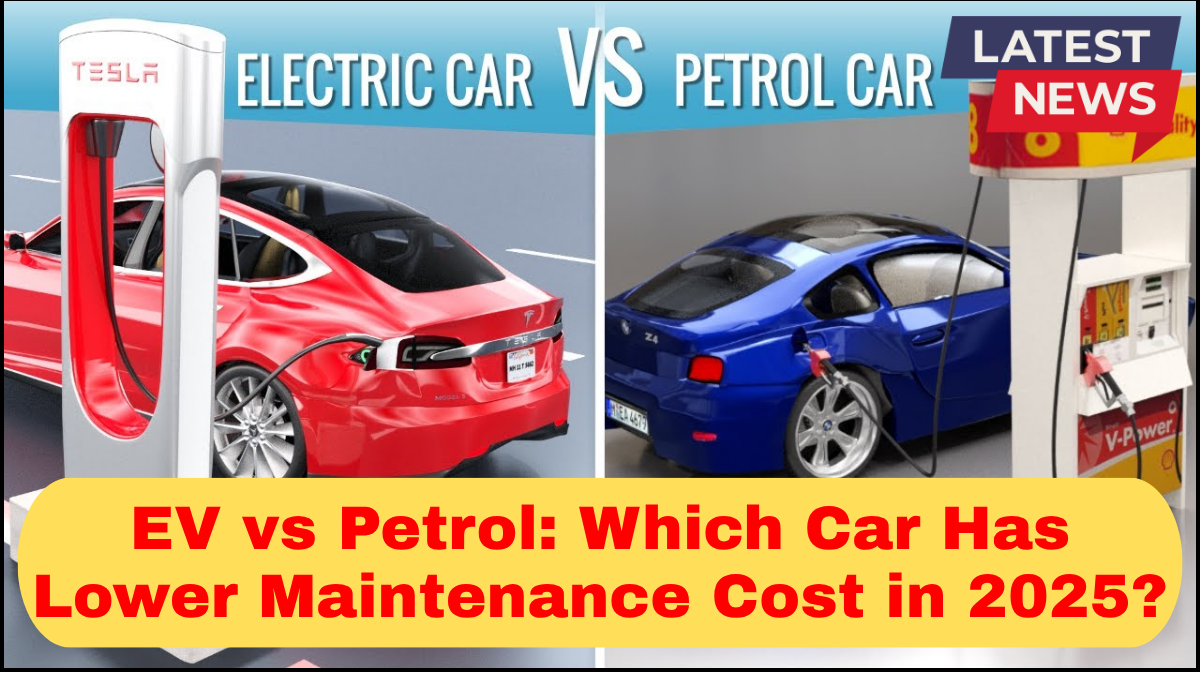The debate between electric vehicles (EVs) and petrol-powered cars is no longer just about environmental impact or driving experience—it’s increasingly about long-term ownership costs. In 2025, as EV technology matures and more models flood the market, one major factor tipping the scale for many buyers is maintenance. So let’s get straight to the point: Which wins the cost battle—EVs or petrol cars?

Here’s a detailed Petrol vs EV maintenance costs comparison for 2025.
Fewer Moving Parts: EVs Require Less Routine Maintenance
Electric vehicles have a significant mechanical advantage: fewer moving parts. EVs don’t need oil changes, spark plug replacements, or fuel system servicing. The typical EV has:
-
No internal combustion engine
-
No exhaust system
-
No timing belts
-
No transmission fluid (in most cases)
By contrast, petrol cars rely on a complex combustion system that wears down over time. Regular maintenance like oil changes every 5,000–10,000 miles, air filter replacements, and spark plug servicing adds up—both in cost and time.
2025 Cost Breakdown: EV vs Petrol Maintenance
Let’s look at a rough cost comparison (auto 2025) based on average estimates:
| Maintenance Task | EV (Annual) | Petrol Car (Annual) |
|---|---|---|
| Oil Changes | $0 | $100–$150 |
| Brake Servicing | $50 | $150–$300 |
| Battery Health Check | $100 | $0–$50 |
| Engine Tuning | $0 | $200–$400 |
| Transmission Service | $0–$50 | $150–$250 |
| Cooling System | $50 | $100–$200 |
| Total (Annual) | $200–$250 | $700–$1,350 |
Bottom Line: EVs save owners between $500 and $1,000 per year on maintenance alone in 2025.
What About Battery Replacements?
A common concern with EVs is battery degradation. While replacement can cost between $5,000 and $15,000, most modern EVs come with 8–10-year warranties or 100,000+ miles coverage. Plus, battery technology in 2025 is significantly more durable than just a few years ago. Failures are rare within the first decade of use.
On the other hand, petrol engines can also face catastrophic failures—timing chain breaks, transmission issues, or head gasket failures—which can cost thousands to repair.
So while battery replacement is a large expense, it’s rarely a routine maintenance issue.
Regenerative Braking: Less Wear, Fewer Repairs
One of the subtle but powerful benefits of EVs is regenerative braking. This system slows the car down using the electric motor, reducing reliance on traditional brakes. That means:
-
Brake pads last longer (up to twice as long)
-
Less frequent servicing
-
Lower costs over time
Petrol vehicles, which rely solely on friction-based braking, wear pads faster—especially in urban stop-and-go traffic.
Service Network: Who Has the Advantage in 2025?
In previous years, EV owners faced limited service centers. But in 2025, the rise of dedicated EV service hubs and mobile servicing options has closed that gap. Brands like Tesla, Rivian, and even legacy automakers like Ford and Hyundai now offer dedicated EV service programs.
Petrol vehicles still enjoy a wider range of independent mechanics, but that’s becoming less relevant as EV expertise spreads.
Environmental Costs Don’t Show on the Invoice
While not a direct maintenance cost, it’s worth mentioning: petrol vehicles come with hidden environmental costs. Emissions lead to societal expenses in healthcare and environmental cleanup—costs that governments may pass to drivers via carbon taxes or congestion fees, which are on the rise globally.
Final Verdict: EVs Take the Lead in 2025
When it comes to Petrol vs EV maintenance costs, the numbers speak clearly. EVs, in 2025, have significantly lower maintenance demands, thanks to simpler engineering and fewer wear-prone components.
Add to that improved battery tech, falling service costs, and longer-lasting parts, and it’s easy to see why EVs are winning the cost comparison in the auto market today.
FAQs
Q1: Are EVs really cheaper to maintain than petrol cars?
Yes. In 2025, EVs typically cost 40–70% less to maintain annually compared to petrol cars, mainly due to fewer moving parts and less wear.
Q2: What’s the most expensive part of EV maintenance?
The battery is the costliest component, but most EVs now come with long warranties and improved longevity, making replacements rare within the first 8–10 years.
Q3: Do EVs require brake pad replacement?
Yes, but much less frequently. Regenerative braking reduces wear on traditional brake pads significantly.
Q4: Will EV maintenance get even cheaper in the future?
Most likely. As technology improves and EV-specific service centers expand, economies of scale will drive costs down further.
Q5: Is the lower maintenance cost enough to offset the higher upfront price of EVs?
In many cases, yes—especially when combined with lower fuel costs and tax incentives, EVs often achieve lower total cost of ownership over 5–10 years.
click here to learn more